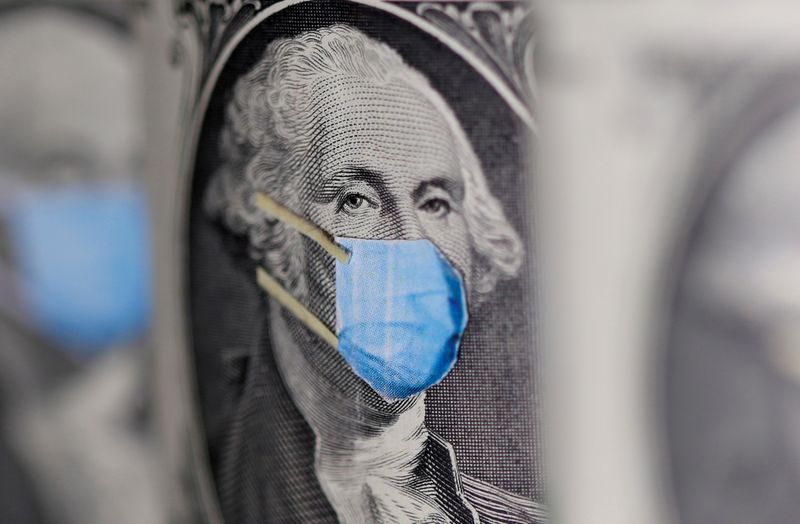NEW YORK (Reuters) – The dollar kicked off the fourth quarter on a sour note, falling to a more than one-week low on Thursday against a major currency basket, as hopes for U.S. fiscal stimulus cheered investors and spurred them to seek higher-yielding but riskier currencies.
The Chinese yuan gained the most against the dollar, reaching a year-and-a-half high in the offshore market, as a holiday in China dried up liquidity, exaggerating the moves.
In addition, Chinese data on Wednesday showed its economic recovery was on track.
Commodity currencies such as the Australian, New Zealand, and Canadian dollars as well as the Norwegian crown also rose versus the greenback.
U.S. House Speaker Nancy Pelosi and Treasury Secretary Steven Mnuchin remained far from agreement on COVID-19 relief in several key areas on Thursday, after a phone discussion failed to bridge what Pelosi described as differences over dollars and values.
Congressional Democrats have proposed a $2.2 trillion package to respond to a pandemic, while Republicans have suggested a $1.6 trillion response.
“Both sides have a lot of signaling, like peacocks walking around. If we don’t get anything before the election, we’ll get something after,” said Marc Chandler, chief market strategist, at Bannockburn Forex in New York.
“But as we get into the new period, people still want to buy equities and to take on some risk,” he added.
Wall Street shares were higher on the day, while U.S. Treasury prices were lower.
In afternoon trading, the euro rose 0.2% against the dollar to $1.1743 <EUR=EBS>.
The Australian dollar rose 0.3% against the greenback to US$0.7189 <AUD=D3>. The New Zealand dollar gained 0.6% to US$0.6648 <NZD=D3>. Against the Canadian dollar, the U.S. dollar fell 0.4% C$1.3270 <CAD=D3>.
The dollar index was down 0.1% at 93.722 <=USD>, after earlier falling to 93.522, its weakest level since Sept. 22.
That said, analysts remained skeptical about the dollar’s weakness and looked to fade the moves in risk assets overall.
“There is heightened possibility, especially in Europe, for more localized lockdowns,” said Simon Harvey, FX market analyst, at Monex Europe in London. “And that kind of risk-off filtering into the dollar is very much alive and kicking.”
Thursday’s U.S. data had minimal impact on currencies. If anything, they affirmed the tentative nature of the U.S. economic recovery.
Data showed U.S. initial jobless claims fell last week but remained at recession levels, while personal income dropped in August.
U.S. construction spending increased more than expected in August as historically low interest rates boosted homebuilding, but manufacturing activity unexpectedly slowed in September.
Elsewhere, the dollar fell to 6.7306 yuan <CNH=EBS> in the offshore market, its lowest since early May 2019. It was last down 0.5% at 6.7506 yuan.
(Reporting by Gertrude Chavez-Dreyfuss; Editing by Bernadette Baum and David Gregorio)























